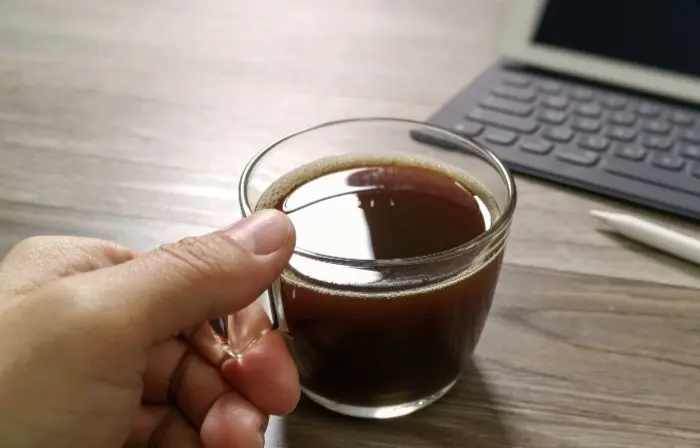Espresso is a concentrated coffee beverage with a rich, complex flavor profile. When brewed correctly, it should strike a balance between sweetness, bitterness, and acidity. However, if your espresso tastes sour, it means something is off in the brewing process. Sourness is often a sign of under-extraction, but other factors can contribute as well.
In this article, we’ll explore the reasons behind sour espresso and how to fix it. We’ll cover extraction principles, grind size, water temperature, dose, and other key variables. By the end, you’ll know exactly how to adjust your technique for a smoother, more balanced shot.
Understanding Sourness in Espresso
Sourness is a natural characteristic of coffee, originating from acids like citric, malic, and acetic acid. In small amounts, these acids contribute brightness and complexity. However, excessive sourness means the espresso is under-extracted—meaning not enough flavor compounds have been dissolved from the coffee grounds.
Under-extraction occurs when water passes through the coffee too quickly or fails to dissolve the right balance of flavors. The first compounds extracted are acids, followed by sweetness, and finally bitterness. If the extraction stops too soon, the shot will taste sour and lack depth.
Common Causes of Sour Espresso
Several factors can lead to a sour espresso. Let’s break them down one by one.
Grind Size is Too Coarse
The grind size directly affects extraction time. If the coffee is ground too coarsely, water flows through too quickly, extracting mostly acidic compounds while leaving behind sweetness and bitterness.
Solution:
- Use a finer grind to slow down extraction.
- Aim for an extraction time of 25–30 seconds for a standard double shot (18–20g of coffee yielding 36–40g of liquid).
- Adjust incrementally—small changes make a big difference.
Water Temperature is Too Low
Espresso requires hot water (typically between 195°F and 205°F) to properly extract flavors. If the water is too cool, it won’t dissolve enough sugars and oils, leaving the shot tasting sour.
Solution:
- Check your machine’s temperature settings.
- Preheat the portafilter and cup to maintain heat stability.
- If using a manual machine, allow proper heating time before pulling the shot.
Insufficient Brew Time
Under-extraction often happens when the shot runs too fast. A good espresso shot should take about 25–30 seconds. If it finishes in 15–20 seconds, the water hasn’t had enough contact time with the coffee.
Solution:
- Adjust grind size finer to increase extraction time.
- Ensure proper tamping pressure (about 30 lbs of force) to create resistance.
- Check for channeling (uneven water flow), which can cause fast extractions.
Low Coffee Dose
Using too little coffee in the portafilter means water passes through too quickly, leading to under-extraction. A standard double shot uses 18–20g of coffee.
Solution:
- Increase the dose slightly (e.g., from 16g to 18g).
- Ensure the coffee is evenly distributed before tamping.
Poor Bean Quality or Roast Level
Lightly roasted beans are naturally more acidic, which can emphasize sourness. Old or stale beans also lose sweetness, making sourness more pronounced.
Solution:
- Use freshly roasted beans (within 2–4 weeks of roast date).
- Try a medium or dark roast if light roasts taste too sour.
- Store beans in an airtight container away from light and heat.
Channeling During Extraction
Channeling happens when water finds paths of least resistance, unevenly extracting the coffee. This leads to a mix of under- and over-extracted flavors, often with a sour note.
Solution:
- Distribute grounds evenly before tamping.
- Tamp with consistent pressure to avoid cracks.
- Use a WDT (Weiss Distribution Technique) tool to break up clumps.
How to Fix Sour Espresso: Step-by-Step Adjustments
Now that we’ve identified the causes, here’s a systematic way to troubleshoot and improve your shot.
Step 1: Check Your Grind Size
Start by grinding finer. If the shot still tastes sour, adjust further. If it becomes bitter, you’ve gone too fine—dial back slightly.
Step 2: Monitor Extraction Time
Time your shot from the moment water hits the coffee. If it’s too fast (under 25 seconds), adjust grind size or dose.
Step 3: Adjust Water Temperature
If your machine allows temperature adjustments, increase it by a few degrees. See if the sourness decreases.
Step 4: Evaluate Your Beans
Try a different roast or fresher beans. If the sourness persists, the issue is likely in the brewing process.
Step 5: Improve Tamping and Distribution
Ensure even tamping to prevent channeling. A level, consistent tamp promotes uniform extraction.
Preventing Sour Espresso in the Future
Consistency is key in espresso brewing. Here’s how to maintain balanced shots:
- Use a scale to measure coffee and yield accurately.
- Keep your equipment clean—residue can affect flavor.
- Experiment with ratios (e.g., try a 1:2.5 ratio if 1:2 is too sour).
- Take notes on adjustments to track what works.
Conclusion
Sour espresso is usually a sign of under-extraction, but with careful adjustments, you can achieve a well-balanced shot. Focus on grind size, brew time, temperature, and bean quality. Small changes can make a big difference, so experiment patiently.
By understanding these factors, you’ll be able to diagnose and fix sour espresso—leading to richer, more enjoyable coffee every time.
Related topics:
How Do You Make Espresso Powder?
How Much Pressure to Make Espresso?
How Many Grams of Coffee to Make Espresso?


